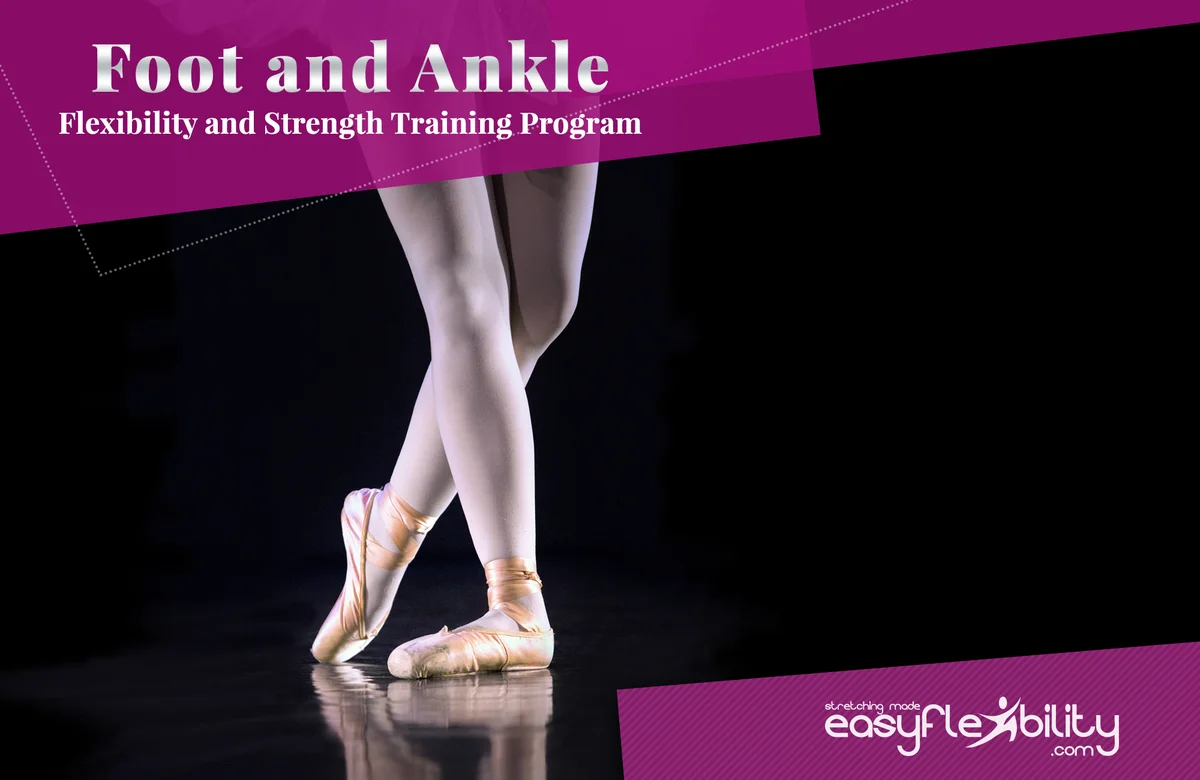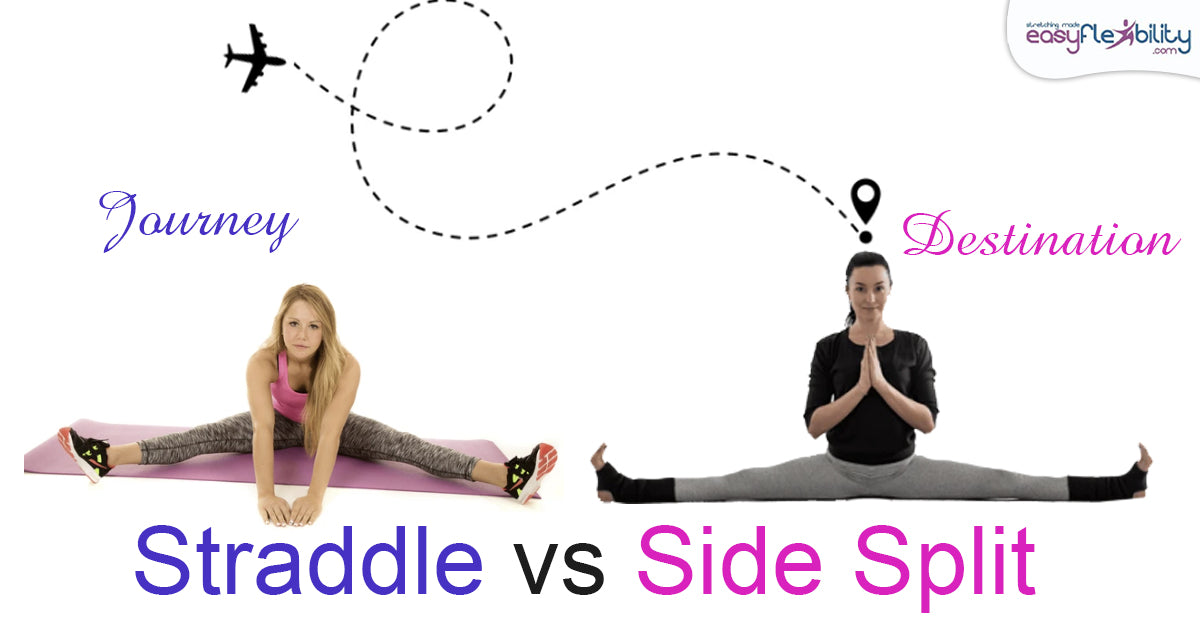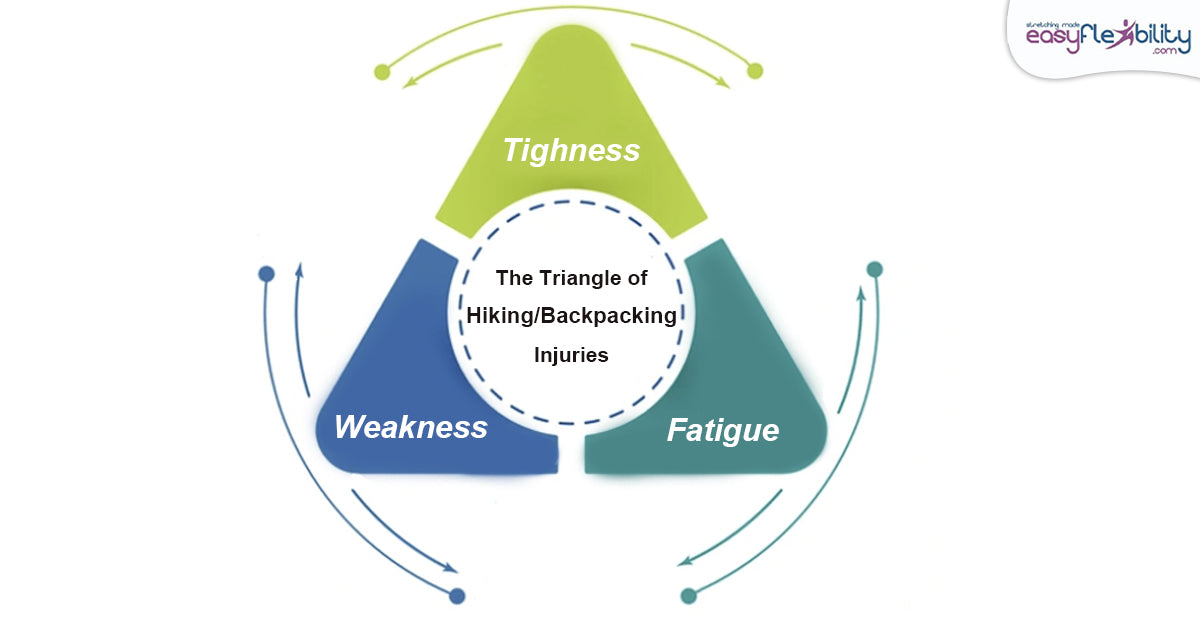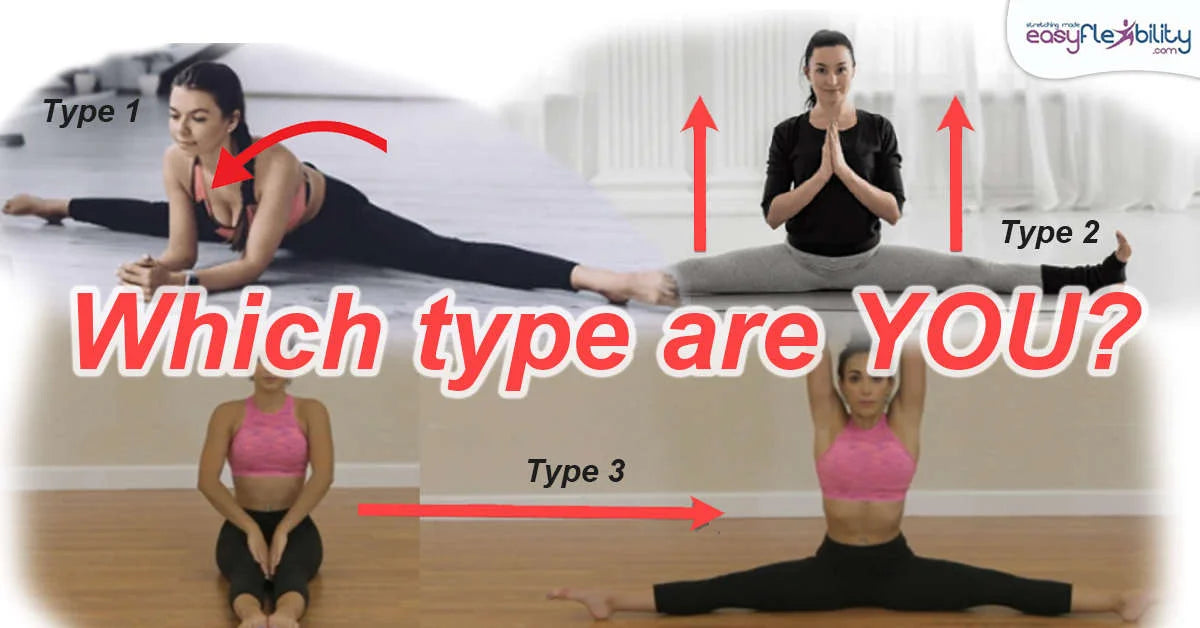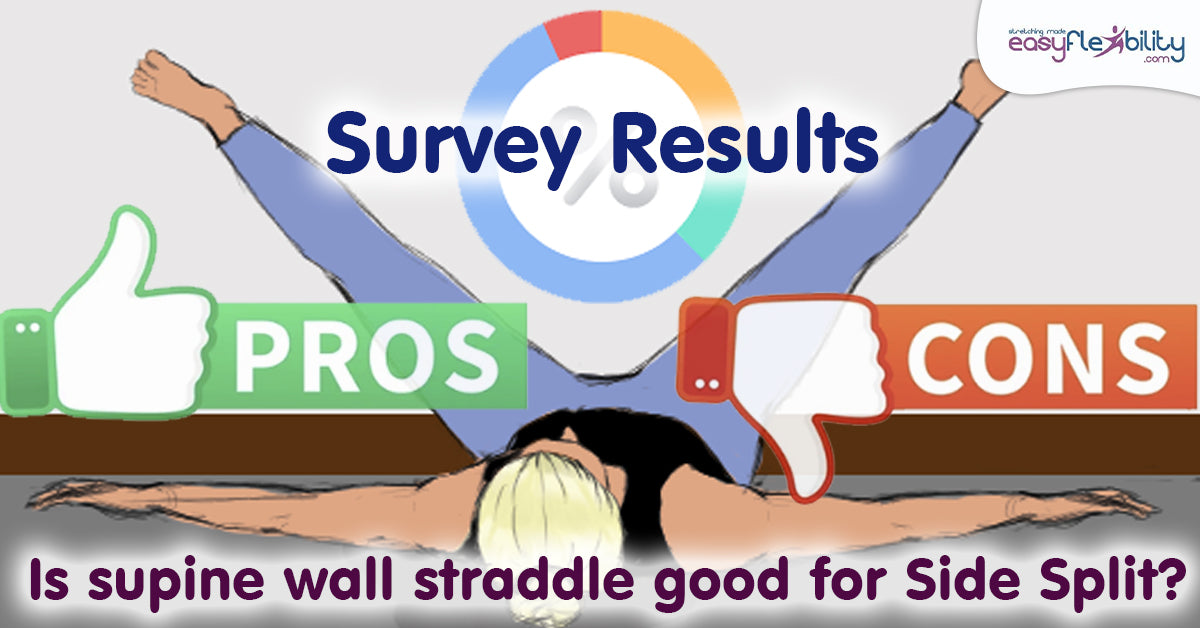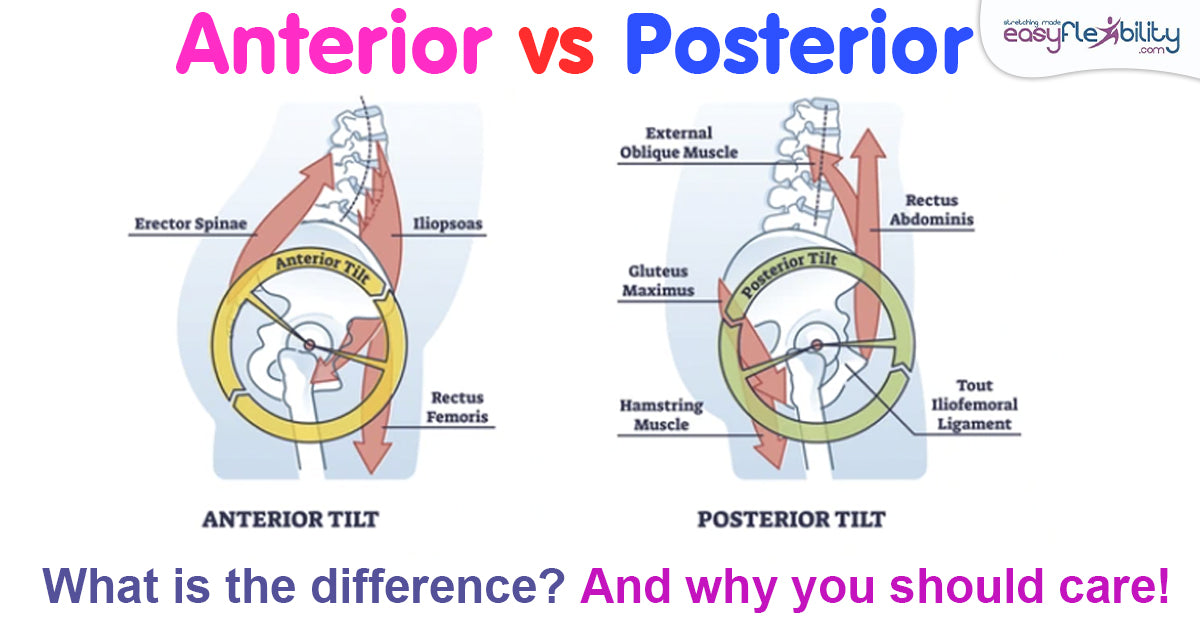Calf Stretch: The right way of stretching your calf and why you still have issues with your foot and ankle flexibility
Posted by Paul Zaichik on

Calf stretch, Soleus stretch, the Gastrocnemius stretch vs four other plantar flexors of the ankle.
For you to better understand the reason why your ankle flexibility is lacking, it is important to know that there are four muscles that plantar flex the ankle (bring the heel up and push your toes away).
Soleus and Gastrocnemius are the most powerful, but the two of them are only one third of all the muscles that restrict the dorsiflexion or pulling your foot up and pointing your heel. In this article we will explain the reason for all the different exercises in the EasyFlexibility Foot & Ankle program, as opposed to just one standard calf stretch that we see people do all the time.
Soleus and Gastrocnemius are the most powerful, but the two of them are only one third of all the muscles that restrict the dorsiflexion or pulling your foot up and pointing your heel. In this article we will explain the reason for all the different exercises in the EasyFlexibility Foot & Ankle program, as opposed to just one standard calf stretch that we see people do all the time.
The standard Calf/Soleus/Gastrocnemius stretch.
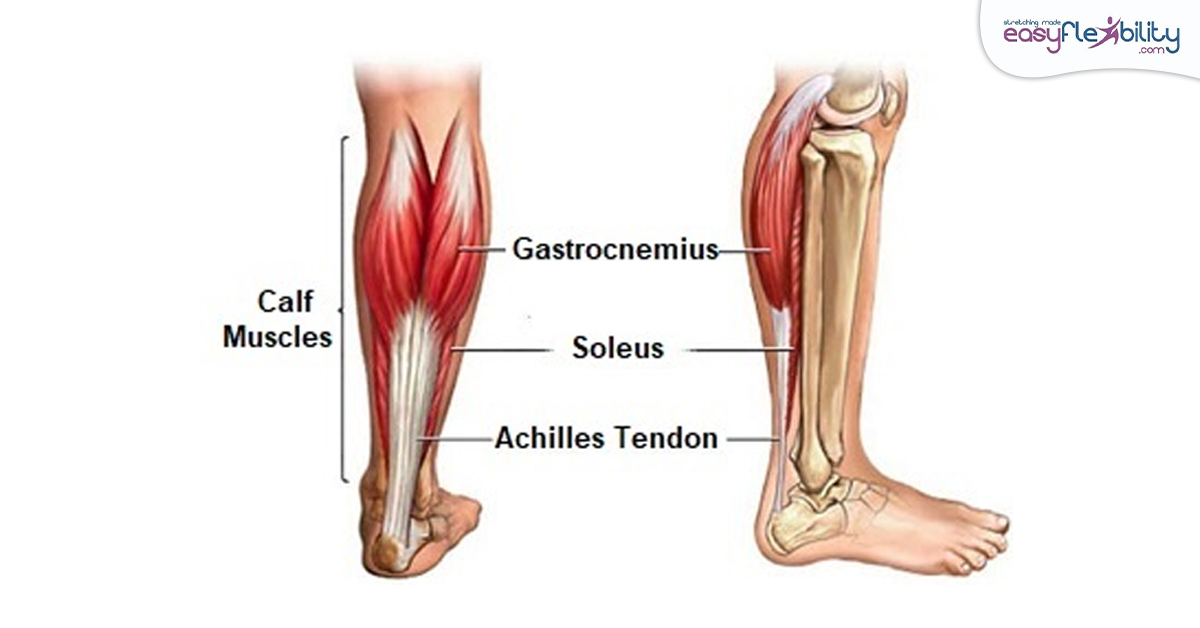
The Soleus and the Gastrocnemius muscles both plantar flex your foot. In other words, when you go up on your toes, these muscles contract. The long muscle overlays the short muscle as usually is the case. Other muscle groups such as Gluteus Medius overlay the gluteus minimus and Rectus femoris overlay the Vastus medialis, Vastus lateralis and Vastus intermedius and the long muscle usually works on more joints.
Soleus crosses the ankle, while the Gastrocnemius crosses the ankle and the knee. For that reason, the Gastrocnemius also flexes the knee and not only plantar flexes, the ankle. In the EasyFlexibility system, different actions of the muscles and different joints that they work on are always taken into account, and thus, stretching techniques look different even for synergetic muscles that do the same thing.
Soleus crosses the ankle, while the Gastrocnemius crosses the ankle and the knee. For that reason, the Gastrocnemius also flexes the knee and not only plantar flexes, the ankle. In the EasyFlexibility system, different actions of the muscles and different joints that they work on are always taken into account, and thus, stretching techniques look different even for synergetic muscles that do the same thing.
The Foot & Ankle Flexibility & Strength
Online On-Demand Training Program
Flexibility of the lower leg is often overlooked. Most athletes don't go much past the standard calve stretches. Dance and ballet schools go deeper and include various foot, ankle, and toes exercises and also front of the lower leg stretches, which still don't work or are very slow to produce results for many people.
The difference in stretching the soleus muscle with the gastrocnemius muscle.
Even if you are going to do passive standard stretches, which are not EasyFlexibility techniques, because EasyFlexibility techniques are moving stretches and not passive stretches. But even if you are going to do regular standard stretching. If your knee is extended because the Gastrocnemius flexes the knee you will stretch the Gastrocnemius but you are not going to get to Soleus. To get to Soleus you have to bend the knee. This is similar to Psoas and Iliacus muscles. They both do almost the same thing, but they are different and extra action is required to separate them and stretch them.
In that standard stretch where you stand with your hands against the wall and one leg is in the back of you and the heel is on the floor. If your leg is straight, most likely you are stretching the Gastrocnemius muscle. If your knee is bent you are aiming at the Soleus muscle. If you are looking for flexibility in your ankle then these two stretches, if you do them both, won't be enough to get your ankle flexibility. Because there are six muscles that plantar flex the ankle and not two.
In that standard stretch where you stand with your hands against the wall and one leg is in the back of you and the heel is on the floor. If your leg is straight, most likely you are stretching the Gastrocnemius muscle. If your knee is bent you are aiming at the Soleus muscle. If you are looking for flexibility in your ankle then these two stretches, if you do them both, won't be enough to get your ankle flexibility. Because there are six muscles that plantar flex the ankle and not two.
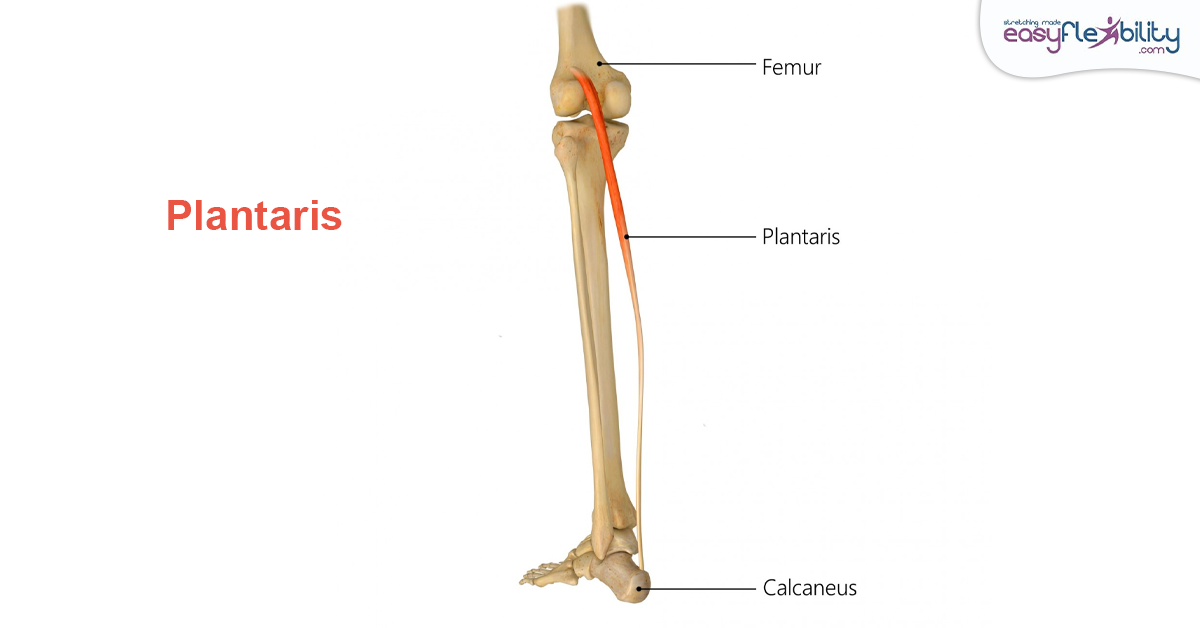
The other four lesser-known plantar flexors.
So, besides the Gastrocnemius and Soleus, what are the other four muscles? There is a muscle called Plantaris. Plantaris is not commonly mentioned. Not everyone even has that muscle and it is currently believed that the muscle is more about proper receptive awareness than about the power. However, if you do have Plantaris (a muscle that not everyone has) and it's tight, it will prevent you from full dorsiflexion. In other words, from pulling your toes up and pointing your heel. Even if it's not a power muscle, it could still prevent flexibility.
Tibialis Posterior
Tibialis posterior is a muscle that also plantar flexes your ankle and can prevent dorsiflexion of your ankle. You've probably heard of the Tibialis anterior, which is a muscle in front of your shin. And that muscle dorsiflexes the ankle. Of course, if you have Tibialis anterior and not just tibialis, it means that there is a posterior tibialis somewhere as well, and that tibialis posterior is behind the leg. Opposite of the tibialis anterior, which is in front of your lower leg.

Flexor Hallucis Longus
Now we have Flexor hallucis longus. Flexor hallucis longus and flexor digitorum longus. These muscles are unique in that not only do they plantar flex the ankle, but they also work on the toes. There are other muscles that work on the toes as well, but these two cross both the joints of the toes and the ankle.
Thus, these muscles explain why your toe extension or your ability to pull your toes up and expose the ball of your foot, changes with the position of your ankle. Same way as your ability to flex or extend your fingers will change with the position of your wrist.
So, regardless of how well-known these muscles are, they are still plantar flexors, together with the other four muscles mentioned above. If they are not flexible they will restrict dorsiflexion or they will pull the toes into awkward position. And when they are stretched over an ankle joint, they will have to get shorter somewhere else, and that somewhere else will be the toes.
Of course, in the EasyFlexibility system, the Zaichik Stretching Techniques focus specifically on each muscle and its' kinesiological line of pull, and thus the reason for interesting looking techniques that are different from standard stretching techniques. If you are interested in specialized foot and ankle flexibility program using Zaichik Stretching Techniques as well as supporting strength exercises, take a look below.
Thus, these muscles explain why your toe extension or your ability to pull your toes up and expose the ball of your foot, changes with the position of your ankle. Same way as your ability to flex or extend your fingers will change with the position of your wrist.
So, regardless of how well-known these muscles are, they are still plantar flexors, together with the other four muscles mentioned above. If they are not flexible they will restrict dorsiflexion or they will pull the toes into awkward position. And when they are stretched over an ankle joint, they will have to get shorter somewhere else, and that somewhere else will be the toes.
Of course, in the EasyFlexibility system, the Zaichik Stretching Techniques focus specifically on each muscle and its' kinesiological line of pull, and thus the reason for interesting looking techniques that are different from standard stretching techniques. If you are interested in specialized foot and ankle flexibility program using Zaichik Stretching Techniques as well as supporting strength exercises, take a look below.
The Foot & Ankle Flexibility & Strength
Online On-Demand Training Program
Flexibility of the lower leg is often overlooked. Most athletes don't go much past the standard calve stretches. Dance and ballet schools go deeper and include various foot, ankle, and toes exercises and also front of the lower leg stretches, which still don't work or are very slow to produce results for many people.
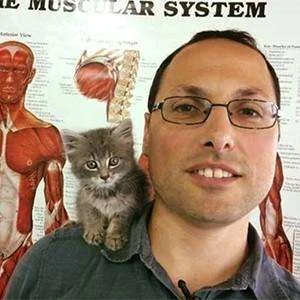
About the Author:
Paul Zaichik is an Exercise Science Expert, author of multitude of books, and the creator of Zaichik Stretching Technique (formely known as Kinesiological Stretching Technique). His speciality is flexibility training as well as body weight conditioning. His innovative method is designed to have maximum carry over into specific athletic techniques. Paul is the author of books and DVD’s on the topic of flexibility, martial arts and bodyweight training. Over the years, Paul Zaichik has worked with a variety of individuals including athletes, entertainers, and military personnel. His ElasticSteel Method of Athletic Conditioning programs, EasyFlexibility Programs and Zaichik Stretching Techniques are used world wide by both professional and amateurs with great success.
© ElasticSteel Corp., EasyFlexibility, Paul Zaichik, et. El., 2022. No part of the materials available through ElasticSteel.com, EasyFlexiiblity.com, site may be copied, photocopied, reproduced, translated or reduced to any electronic medium or machine-readable form, in whole or in part, without prior written consent of Paul Zaichik EasyFlexibility.com, Elasticsteel.com.. Any other reproduction in any form without the permission of Paul Zaichik EasyFlexibility.com, Elasticsteel.com is prohibited. All materials contained on this site are protected by United States copyright law and may not be reproduced, distributed, transmitted, displayed, published or broadcast without the prior written permission of Paul Zaichik, EasyFlexibility.com, Elasticsteel.com.
Share this post
- 0 comment
- Tags: Ballet, calf, Dance, easyflexibility, foot, Foot and ankle flexibility, pulled muscle, stretch, Training Flexibility
0 comment

